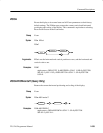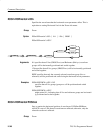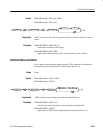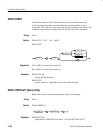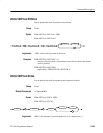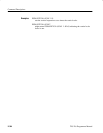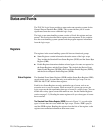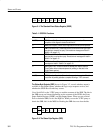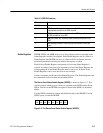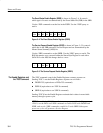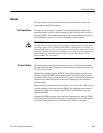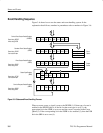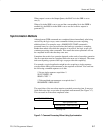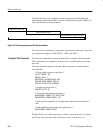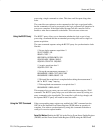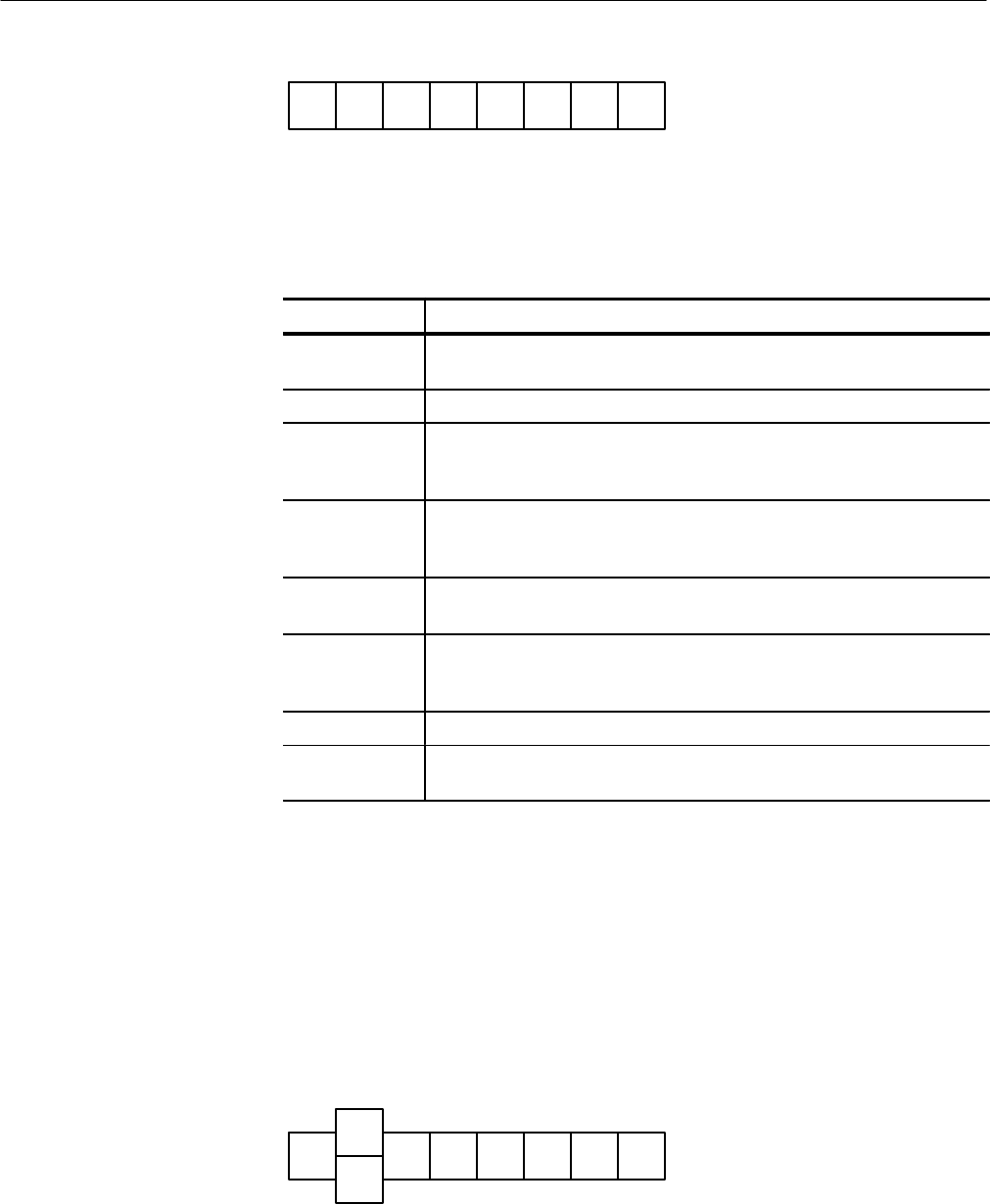
Status and Events
3–2
TLS 216 Programmer Manual
PON URQ CME EXE DDE QYE RQC OPC
76543210
Figure 3–1: The Standard Event Status Register (SESR)
Table 3–1: SESR Bit Functions
Bit Function
7 (MSB) PON (Power On). Shows that the logic scope was powered on. The
completion of the diagnostic tests also sets this bit.
6 URQ (User Request). Shows that an Application menu button was pressed.
5 CME (Command Error). Shows that an error occurred while the logic scope
was parsing a command or query. Command error messages are listed in
Table 3–4 on page 3–13.
4 EXE (Execution Error). Shows that an error occurred while the logic scope
was executing a command or query. Execution error messages are listed in
Table 3–5 on page 3–15.
3 DDE (Device Error). Shows that a device error occurred. Device error
messages are listed in Table 3–6 on page 3–18.
2 QYE (Query Error). Shows that either an attempt was made to read the
Output Queue when no data was present or pending, or that data in the
Output Queue was lost.
1 RQC (Request Control). Not used.
0 (LSB) OPC (Operation Complete). Shows that the operation is complete. This bit
is set when all pending operations complete following a *OPC command.
The Status Byte Register (SBR) shown in Figure 3–2, records whether output is
available in the Output Queue, whether the logic scope requests service, and
whether the SESR has recorded any events.
Use a Serial Poll or the *STB? query to read the contents of the SBR. The bits in
the SBR are set and cleared depending on the contents of the SESR, the Event
Status Enable Register (ESER), and the Output Queue. When you use a Serial
Poll to obtain the SBR, bit 6 is the RQS bit. When you use the *STB? query to
obtain the SBR, bit 6 is the MSS bit. Reading the SBR does not clear the bits.
—
RQS
ESB MAV — — — —
MSS
7
6
543210
6
Figure 3–2: The Status Byte Register (SBR)



